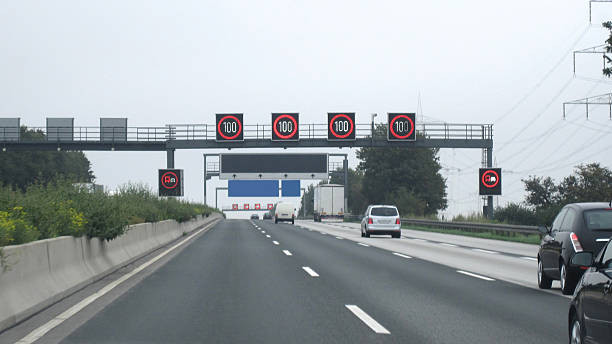Learn the Proper Use of Lanes on Highways
Driving on highways can be intimidating, especially for new drivers. Understanding the proper use of lanes is crucial for safe and efficient driving. In this blog post, we will explore the correct ways to use highway lanes, ensuring you become a confident and skilled driver. At Get Drivers Ed, we emphasize the importance of mastering these skills as part of our comprehensive drivers ed program.
The Basics of Highway Lanes
Highways are designed to facilitate smooth and efficient traffic flow, with multiple lanes designated for different speeds and purposes. Here are the main types of lanes you will encounter on highways:
Left Lane (Passing Lane):
This lane is primarily for overtaking slower vehicles. It is often referred to as the "fast lane" or "passing lane."
Use this lane only when you need to pass another vehicle, and then move back to the right lane once you have safely overtaken the vehicle.
Center Lane:
On highways with three or more lanes, the center lane(s) is for regular driving. It offers a balance between the fast-moving left lane and the slower right lane.
This lane is ideal for long-distance travel at a steady speed.
Right Lane:
The right lane is typically for slower-moving traffic and for vehicles entering or exiting the highway.
If you are driving at a slower speed or approaching your exit, this is the lane to use.
Proper Lane Usage Etiquette
Using highway lanes correctly is not just about following rules; it's about ensuring safety and efficiency on the road. Here are some key etiquette tips for proper lane usage:
Stay Right, Pass Left:
Always drive in the right lane unless you are overtaking another vehicle. This helps maintain a smooth flow of traffic and reduces congestion.
After passing, return to the right lane to allow faster-moving vehicles to overtake.
Avoid Lane Hogging:
Do not stay in the left lane if you are not passing other vehicles. Lane hogging can lead to traffic build-up and frustration among other drivers.
Be mindful of your speed and move over if faster vehicles approach from behind.
Use Turn Signals:
Always use your turn signals when changing lanes. This alerts other drivers to your intentions and helps prevent accidents.
Check your mirrors and blind spots before making any lane changes.
Respect the Speed Limit:
Adhere to the posted speed limits for each lane. Driving too slowly in the fast lane or too quickly in the slow lane can be dangerous.
Adjust your speed according to traffic conditions and the flow of vehicles around you.
Common Mistakes to Avoid
Even experienced drivers can make mistakes when it comes to lane usage. Here are some common errors to avoid:
Frequent Lane Changing:
Constantly switching lanes can be dangerous and cause confusion for other drivers. Plan your lane changes in advance and avoid unnecessary movements.
Stick to your lane as much as possible and change only when necessary.
Tailgating:
Following too closely behind another vehicle can lead to accidents, especially if the vehicle in front suddenly slows down.
Maintain a safe following distance, allowing you ample time to react to any changes in traffic.
Ignoring Road Signs:
Pay attention to road signs indicating lane usage, speed limits, and upcoming exits. Ignoring these signs can result in dangerous situations.
Follow the instructions provided by road signs and adjust your driving accordingly.
Why Proper Lane Usage Matters
Understanding and adhering to proper lane usage is essential for several reasons:
Safety:
Proper lane usage reduces the risk of accidents by ensuring that traffic flows smoothly and predictably.
It helps prevent collisions caused by sudden lane changes or improper speed adjustments.
Efficiency:
Efficient lane usage improves traffic flow, reducing congestion and travel time.
It ensures that all lanes are used effectively, minimizing bottlenecks and delays.
Legal Compliance:
Following lane usage rules is a legal requirement. Violating these rules can result in fines and penalties.
Being aware of and adhering to lane usage laws ensures you remain compliant with traffic regulations.
Conclusion
Mastering the proper use of lanes on highways is a fundamental aspect of safe and efficient driving. By following the guidelines outlined above, you can enhance your driving skills and contribute to a smoother traffic flow. At Get Drivers Ed, we are committed to helping you become a confident and responsible driver. Our comprehensive online drivers ed program covers all aspects of highway driving, ensuring you are well-prepared for any situation.
Ready to elevate your driving skills? Enroll in our online drivers ed program at Get Drivers Ed today and start your journey towards becoming a proficient and safe driver. Visit Get Drivers Ed to learn more and get started!
By following these guidelines and continuously improving your driving habits, you will not only ensure your safety but also contribute to a more efficient and harmonious driving environment for everyone on the road.


